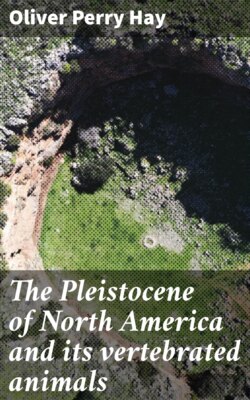Читать книгу The Pleistocene of North America and its vertebrated animals - Oliver Perry Hay - Страница 22
XVII. On the Theory of the Pleistocene Terraces of the Coastal Plain.
ОглавлениеThe writer will discuss briefly the widely accepted theory that along the sea-coast from New Jersey to southwestern Texas there occurs a series of terraces and corresponding escarpments, three or more in number, representing successive emergences of the borders of the continent from the sea. The theory was first proposed by Dr. W. J. McGee (Amer. Jour. Sci., ser. 3, vol. XXV, 1888, p. 367; 12th Ann. Rep. U. S. Geol. Surv., pt. I, 1891, pp. 353–521). He included in the initial submergence not only the area occupied by the supposed Pleistocene terraces, but also the borders of the coasts to an elevation corresponding to the Lafayette (Appomattox) formation, which he referred provisionally to the late Pliocene. This submergence required a depression of the eastern half of the continent amounting to 500 feet or more. The theory was accepted especially by the geologists of Maryland in their excellent reports (Shattuck, Maryland Geol. Surv., Pliocene and Pleistocene volume, pp. 62–137, with maps). It has likewise been applied to the geology of Virginia (Clark and Miller, Va. Geol. Surv. Bull. No. IV, pp. 48–56, 179–189), North Carolina (Stephenson, N. C. Geol. Econom. Surv., vol. III, 1912, pp. 266–290), Georgia (Veatch, Geol. Surv. Ga., Bull. No. 26, 1911, pp. 35–50), as Okefenokee and Satilla; (Stephenson, ibid., pp. 425–445), Florida (Matson and Clapp, Fla. Geol. Surv., vol. II, 1909), and to Texas (Deussen, Water Supply Pap. U. S. Geol. Surv. 335, pp. 78–83).
